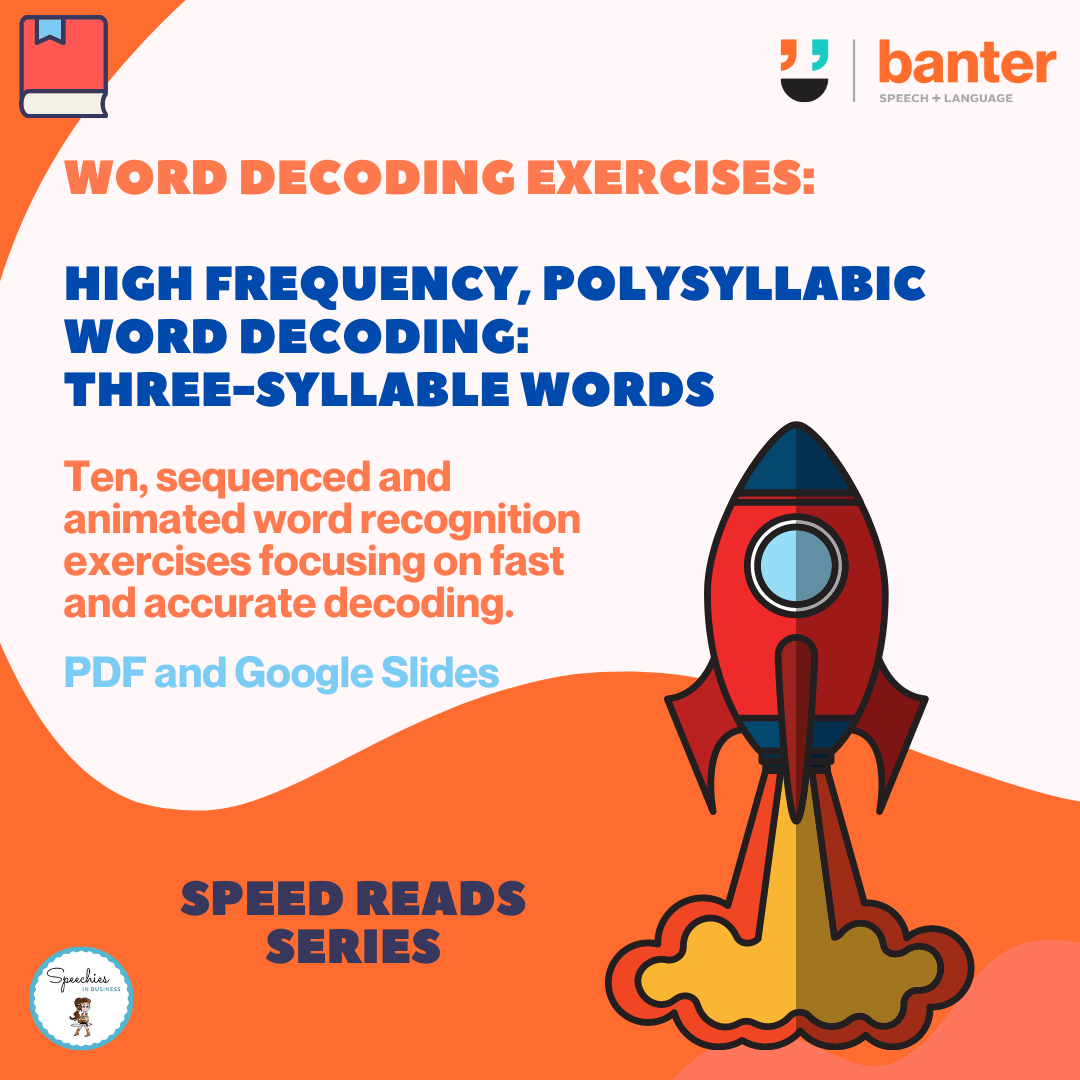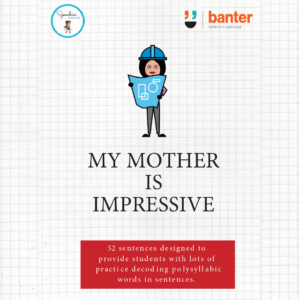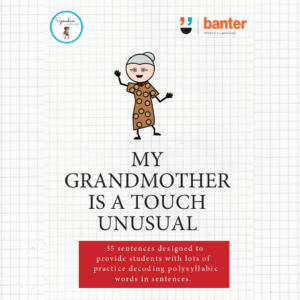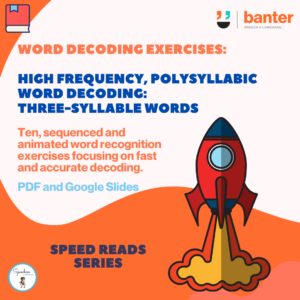(R302) Word Decoding Exercises: High Frequency Polysyllabic Word Decoding-3 syllable words
$4.99 including GST
Ten short word recognition exercises focusing on fast and accurate decoding of high frequency and fully decodable three-syllable words.
Formatted in PDF (for print) and for Google Slides (for smart boards, iPads, and other devices, and to access the animations).
Description
To help beginners read words with more than one syllable (beat), it helps to start with a simple rule of thumb to encourage students to break words up into syllables, decode the graphemes in each syllable into speech sounds, blend the speech sounds to pronounce the syllable, and then to repeat the process for each subsequent syllable.
One of the best rules of thumb for decoding polysyllables that we’ve come across to date is the “vowel-consonant-break” rule by Toe by Toe. It’s based on the idea that every syllable in English has at least one vowel. Simply look for the first vowel in the word, find the next consonant, and then insert a syllable break after the consonant. For the purposes of the break rule, treat double consonants as one consonant (because they represent one consonant speech sound). Like these examples:



As with many things in English, the rule doesn’t always work (especially for words with Greek and Latin prefixes and suffixes). But, with carefully selected words, it encourages students to acquire the habit of breaking polysyllabic words up and then decoding each syllable, rather than using non-evidence-based strategies like guessing from the first letter, syllable, vague ‘word shape’, or the pictures.
Rather than spending too much time explaining the rule, we find it’s faster to show students how to do it, with lots of practice. We start off by inserting in a red slash to show the syllable break following the vowel-consonant-break rule, like this:

We then repeat the exercise without the added breaks, directing the students to break up the words into decodable syllables themselves, either in pencil or mentally (depending on the student). By the end of this practice, students should be able to decode high frequency decodable words themselves, e.g.

We chose the words in this resource from the New General Service List of high frequency words in English, selecting words that are: (a) made up of decodable syllables; and (b) work well with the vowel-consonant-break rule. We also used this opportunity to introduce the suffixes -y, -er, -al, -ive, and -ly.
Here’s a video of how to show the animations in Google Slides:
Related resources:
What next? Step up with these resources!
- Decoding Polysyllabic Words in Sentences (Foundation): My Uncle Patrick is very clever
- Decoding Polysyllabic Words in Sentences: My Dad Does Several Silly Things
- Decoding Polysyllabic Words in Sentences: My Mother Is Impressive
- Decoding Polysyllabic Words in Sentences: My Grandmother is a Touch Unusual










 (R414) The Zoo Druid
(R414) The Zoo Druid 